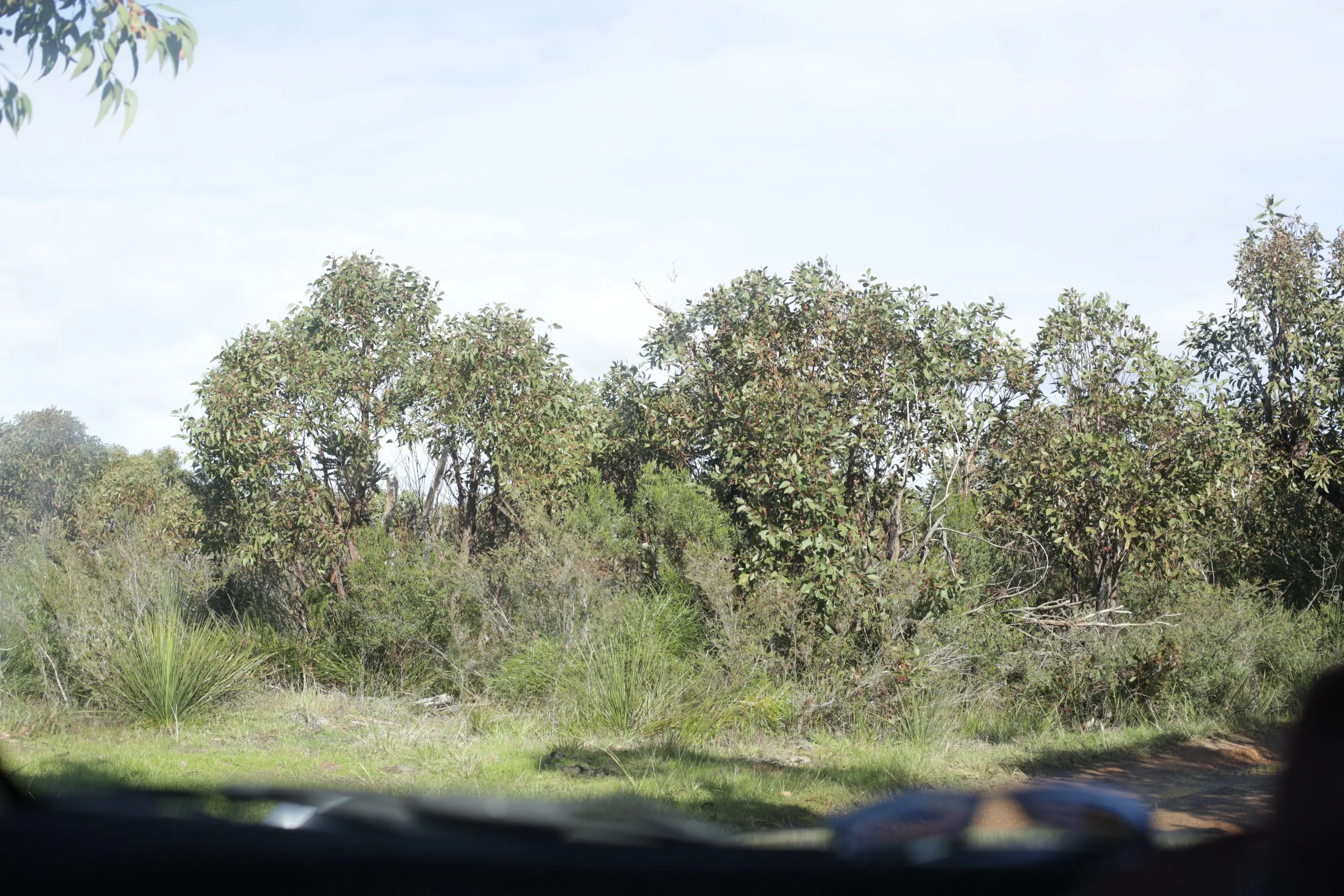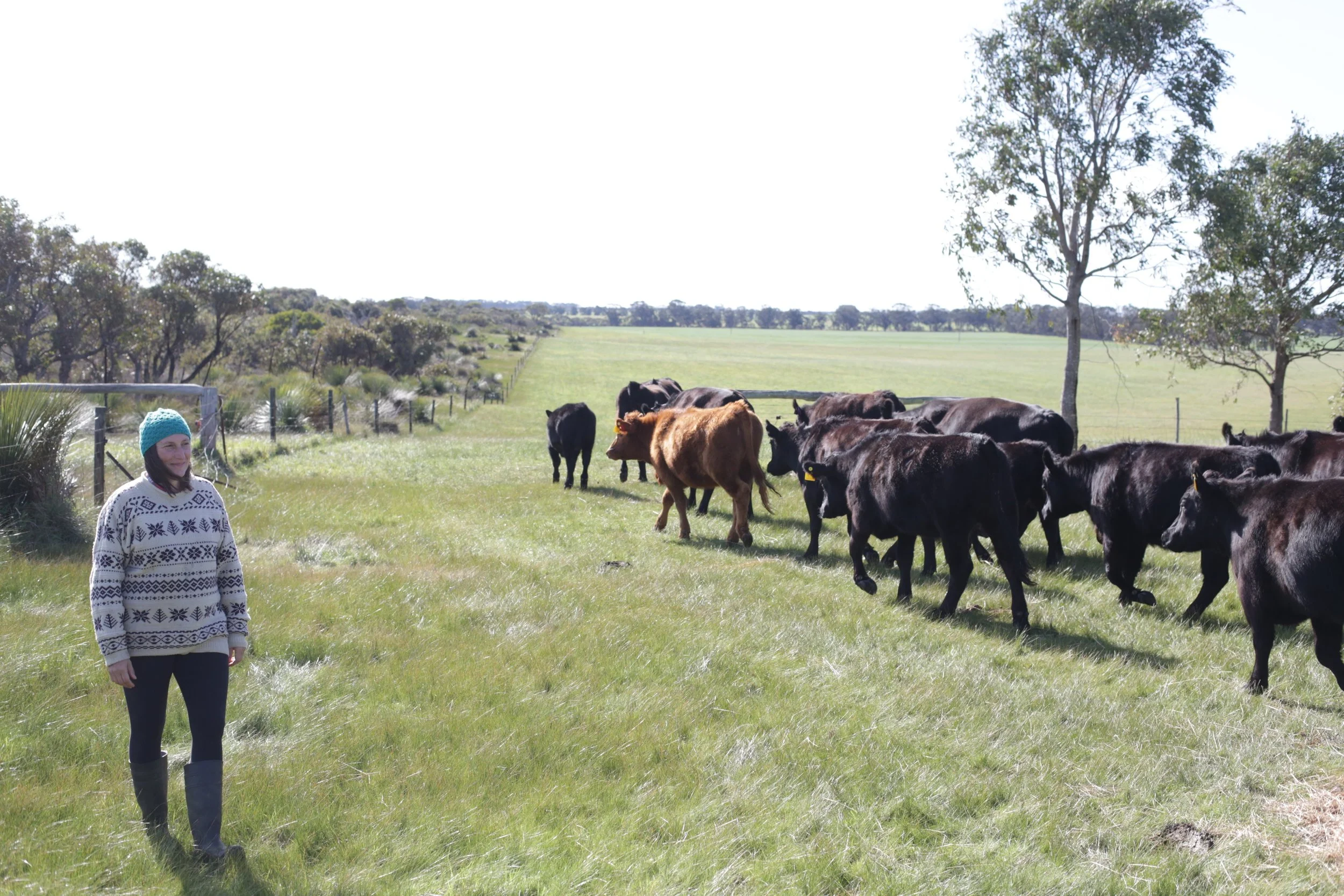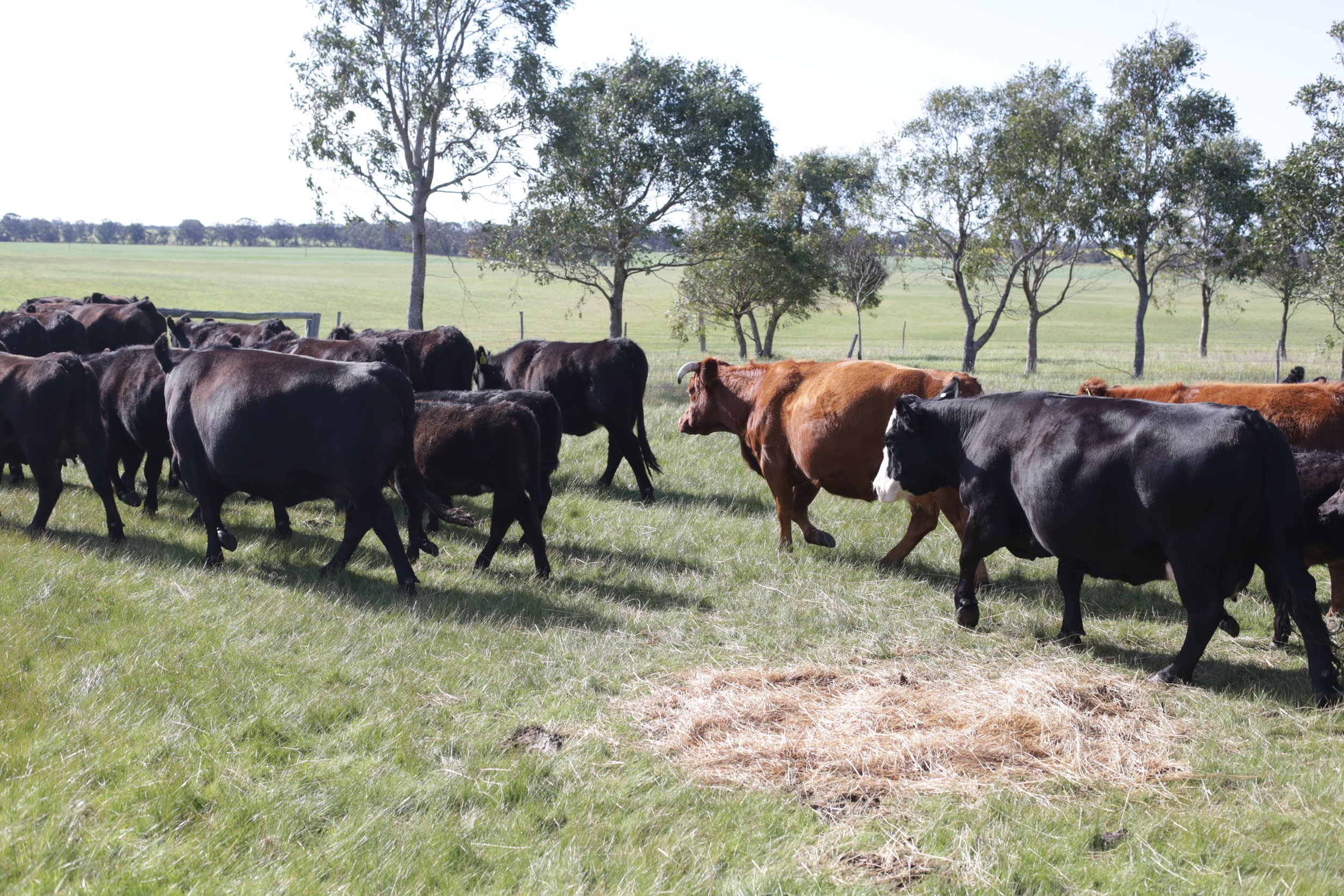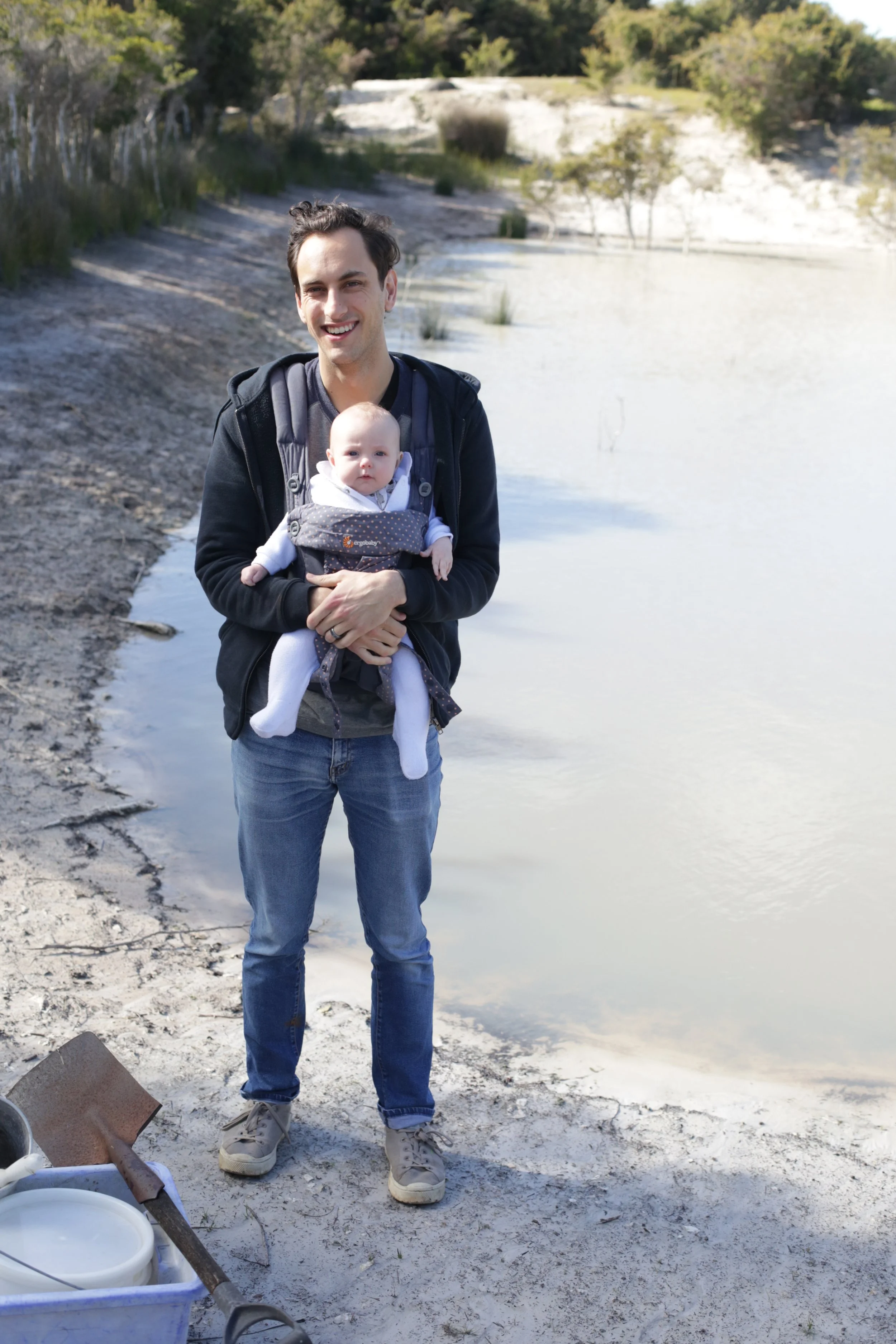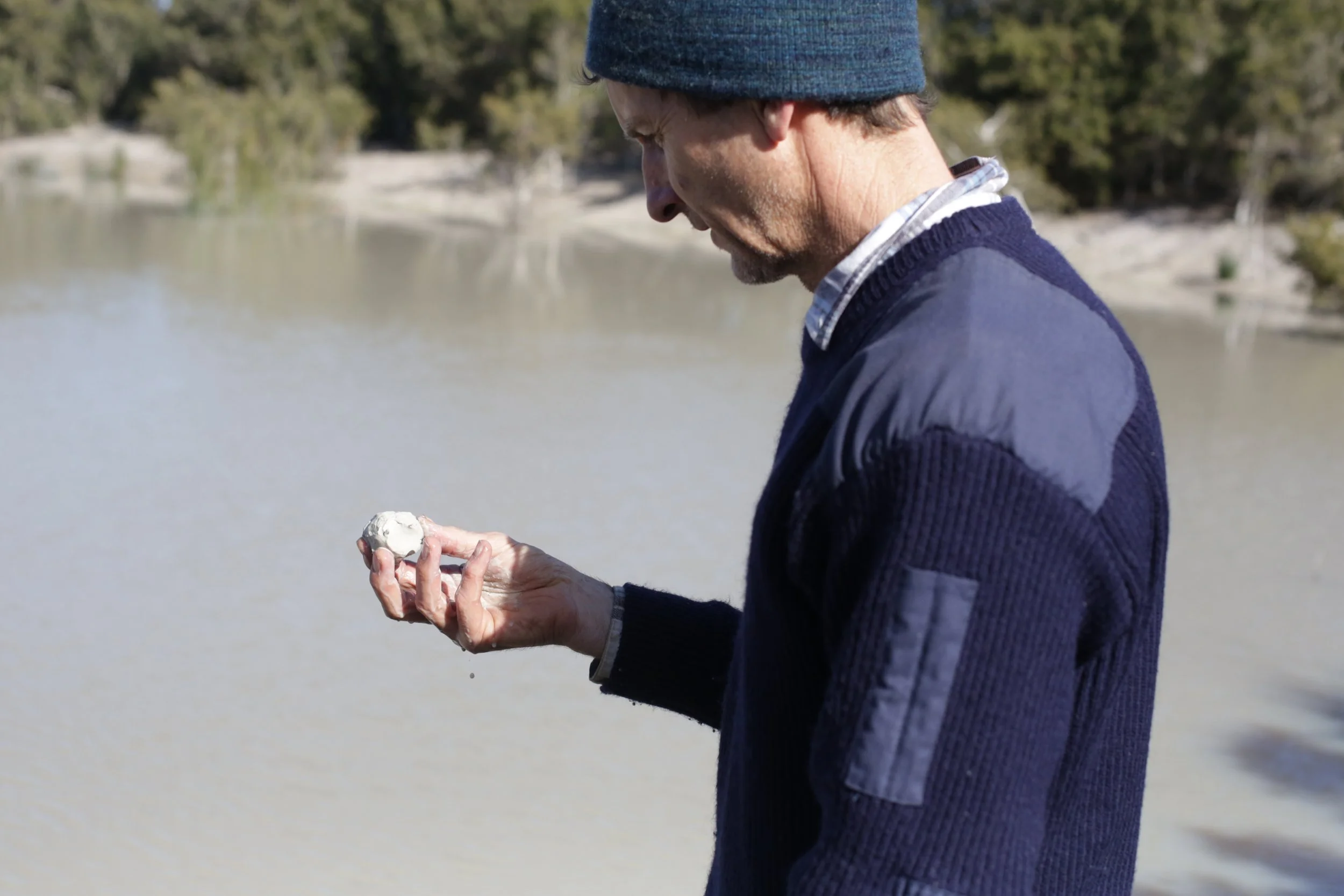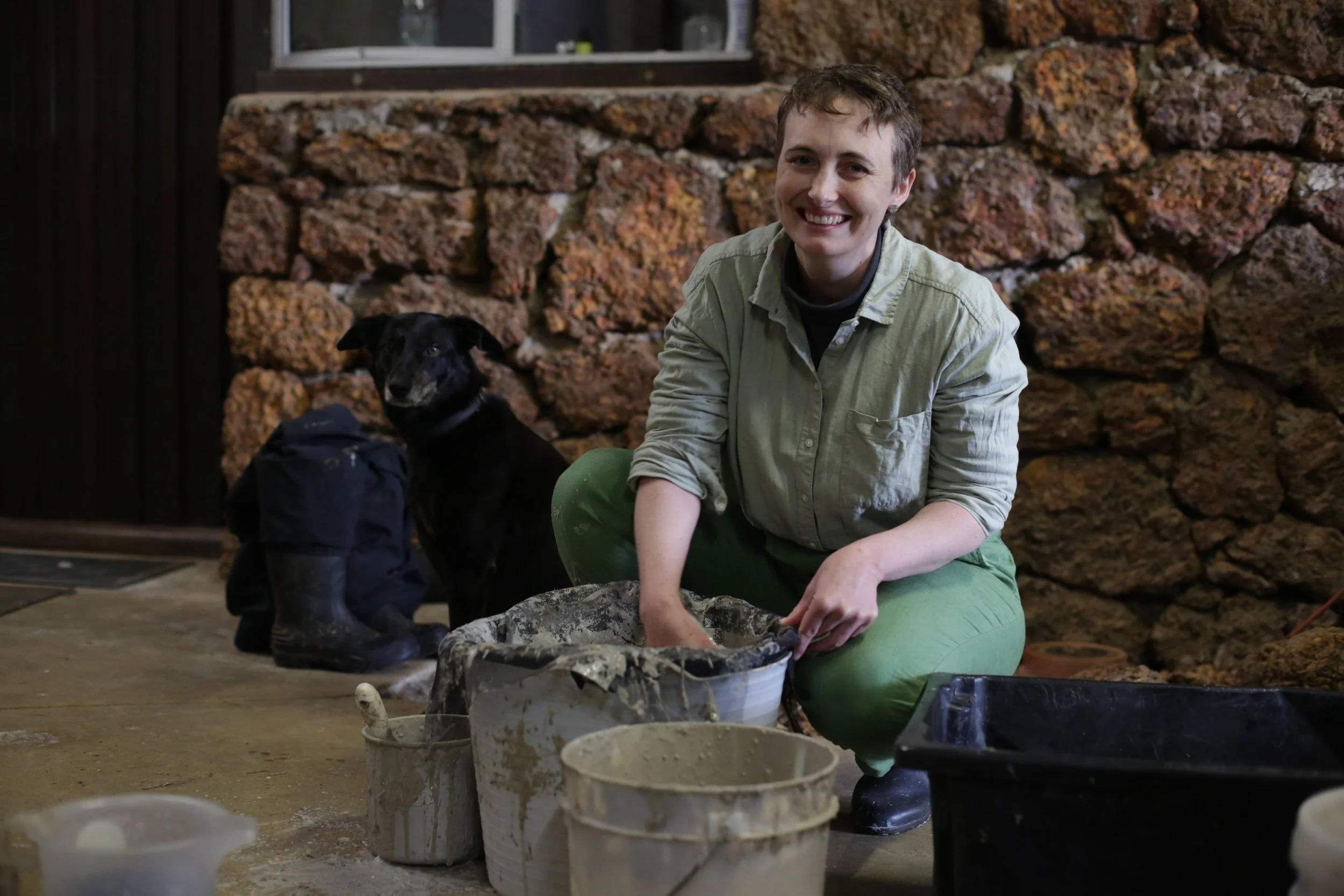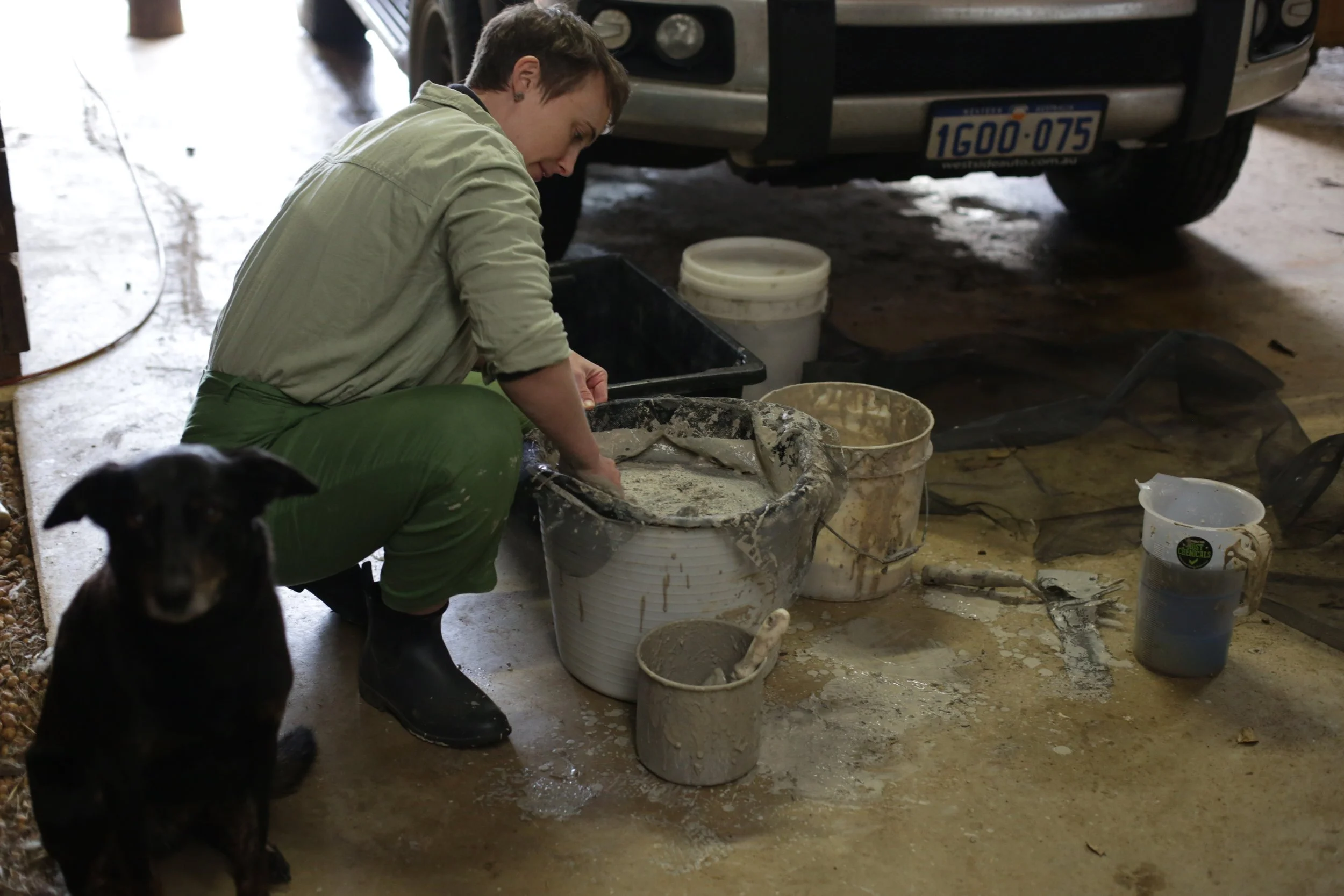Rural Utopias Residency: Elizabeth Pedler in Wellstead Stage 2 Reflection #1
Elizabeth Pedler is currently working with the community of Wellstead. This work is one of over ten, forming part of one of Spaced’s current programs, Rural Utopias.
An artist interested in the range of participation possible in art, Elizabeth's practice spans from playful and interactive installations to collaborative relational aesthetics. Identity, food, and community involvement are areas of particular focus, and have led to significant artistic development in her recent arts practice, engaging with audiences through the sharing of experiences and storytelling.
Here, Elizabeth shares an update from Wellstead.
29 July – 4 August 2022
This first week of stage two felt like a trial, to see how it might be possible to do this residency, now that I have a baby, and my hosts have a baby as well. Trips down to Wellstead had previously been a long drive (5 ½ hours from Perth to Wellstead) but otherwise easy to organise. I would pack everything into the car in the space of an hour, and then listen to music and podcasts, letting my mind wander while I flew through fields, passed through little towns and over the horizon, as the distant silhouettes of mountain ranges drifted by. These trips would take half a day, or sometimes in a rush I might leave in the afternoon to arrive in the late evening, in time to crash out asleep. Since the last residency I had had a baby – my daughter Juno was born in April, she was now nearly 4 months old. My hosts Richard and Kerry had a baby girl as well, Esmae, who was born in January, she was 6 months old now. The last time I’d visited was when Esmae was three weeks old, and the drive when I was seven months pregnant was long and tedious then. This trip, just planning what we’d need was a task in itself. I was lucky that my husband Andrew was able to get the week off work, so I had his support for the drive as well as the week down there.
The journey down from Perth felt long indeed. The poor weather meant our breaks were just spent pulled over on the side of the road, sitting inside the car for feeds, to change, or to play as best we could. Bored from the tedium of being stuck in her car-seat, between Kojonup and Wellstead Juno cried almost continuously, save for short breaks of sleep no longer than 20 minutes. We arrived tired and eager to get out of the car.
Once settled in at Windi Windi, our days took a different shape. More elongated, punctuated by baby naps and feeding. Getting out of the house to visit a dam, collect firewood, or move some cows felt more intentional, and required planning and attention to the time. Our activities clumped around late morning and mid-afternoon, to allow for Juno and Esmae to get sleep. In the early evening we retired to rooms to feed and settle the babies to sleep, before emerging to eat dinner together around 8pm, then chatting around the table, or stretching and relaxing in the loungeroom warmed by the fire.
Our first morning in Wellstead I did an inspection of the Nissen hut and made a note of what we’d need to work on or repair to come down and stay there but decided this visit we’d stay with our hosts in the farmhouse. Next visit I’ll be coming with Josten Myburgh to record sound, and later trips I might bring down family to help me with Juno, so we’ll need to get the hut ready for visitors. While John, a farmhand, had been staying in the hut to help Richard out with the work, the hut lacked water pressure, and the rooms needed to be cleaned up as the damp and dust had crept in, as it always does in older buildings when not being lived in.
The following day Kerry, Andrew and I went with the babies out to one of the dams to harvest clay. Though it was a sunny morning, a chilly breeze and the cold water froze right through me, as I wandered knee deep into the water to pull clods of silty earth out of the bank and fill up buckets. Andrew had Juno in the carrier, and she sat there quietly strapped to his chest and watched the oddity of Kerry and I wading through the mud. Esmae slept in her car-seat, the car parked alongside us, out of the wind. The clay squelched beneath my toes. I used my feet to get a feel of where the bank was softer, thick with silt, and where to avoid, places choked with sand, leaves, and debris from the paperbark trees. After we filled two 10L buckets, I cleaned myself off, standing on the lid of a bucket and washing my feet off with water from the dam. I quickly clothed myself again to escape the wind. The babies had now woken up again, and they each had a feed, then we piled the buckets and tools back into the vehicles. Back at the farmhouse we ate a late lunch. Later in the afternoon Craig and Teena from Hillsea, a few farms over, visited to say hello. We shared mugs of hot tea sitting around the kitchen table, the old woodfired oven blasting to warm up the room. The babies were the centre of attention, all the adults’ eyes following their tiny waving hands, and commenting meaningfully on their little gurgles and grunts.
On Monday morning Kerry, Andrew and I drove over to Wilyun Pools, bringing the babies with us to visit Sylvia. We talked about how Kerry and Sylvia felt about gender in agriculture, and the treatment of the minister (Allanah MacTiernan) by men in the sector, our discussion spurred by an article in the local newspaper. Sylvia then helped me by going through a list of the species documented by Joseph Banks, works from the Banks Florilegium, in the Art Gallery of WA collection. Of the 336 species, Sylvia identified seven that grow in the Wellstead district (Banks documented species mostly on the eastern coast). While Andrew bounced Juno to sleep in the background, Sylvia and I talked about other people that may have considerable knowledge of plants around Wellstead – other botanists, researchers, botanical artists, and people who’ve worked closely with the land. I made notes and started forming plans of how to arrange interviews.
Throughout the rest of the week, Kerry and I processed the clay to get it ready to work with, as well as taking reference photographs of the girls to begin working on plans for the sculpture. We visited town to attend the playgroup, and I met some of the local mums and their little ones. The long rainy days were spent inside to stay dry. When it was sunny, the fierce wind deterred any thoughts I had of recording audio outside.
Split between looking after Juno and getting work done, I could tell this next stage of the project would be much harder than the first stage of the residency. I had started to develop ideas about what I might do, thinking of audio recordings, interviews with locals about various plants and ecologies, and using video of local plants projected onto a sculpture, perhaps made with clay from the dam. I was forming a sense of how this might present in a gallery space, but I was still unsure how I might get the work done in the first place. Andrew wouldn’t be able to come with me each time. I’d been thinking about how I might fit Juno in with my work, putting her in the carrier to accompany me while I did interviews, walked, or took video and photographs. But I could see that any way I tried to wrangle it, this was going to be far more challenging than any work I’d done up until now.
The drive back to Perth was long, stopping frequently along the highway to keep Juno occupied with sights of rivers, cars flying past, and fungi popping up beneath trees. Back at home, Andrew went back to work the next day, and my time reverted to primarily caring for Juno; going out for walks when the weather permitted, getting to appointments, and long rainy days spent singing, dancing and walking around the house between short naps. My mind wandered to the clay drying in my garage that we pulled out of the dam, and thoughts of when Juno and I might next go down to Wellstead.
- Elizabeth Pedler

